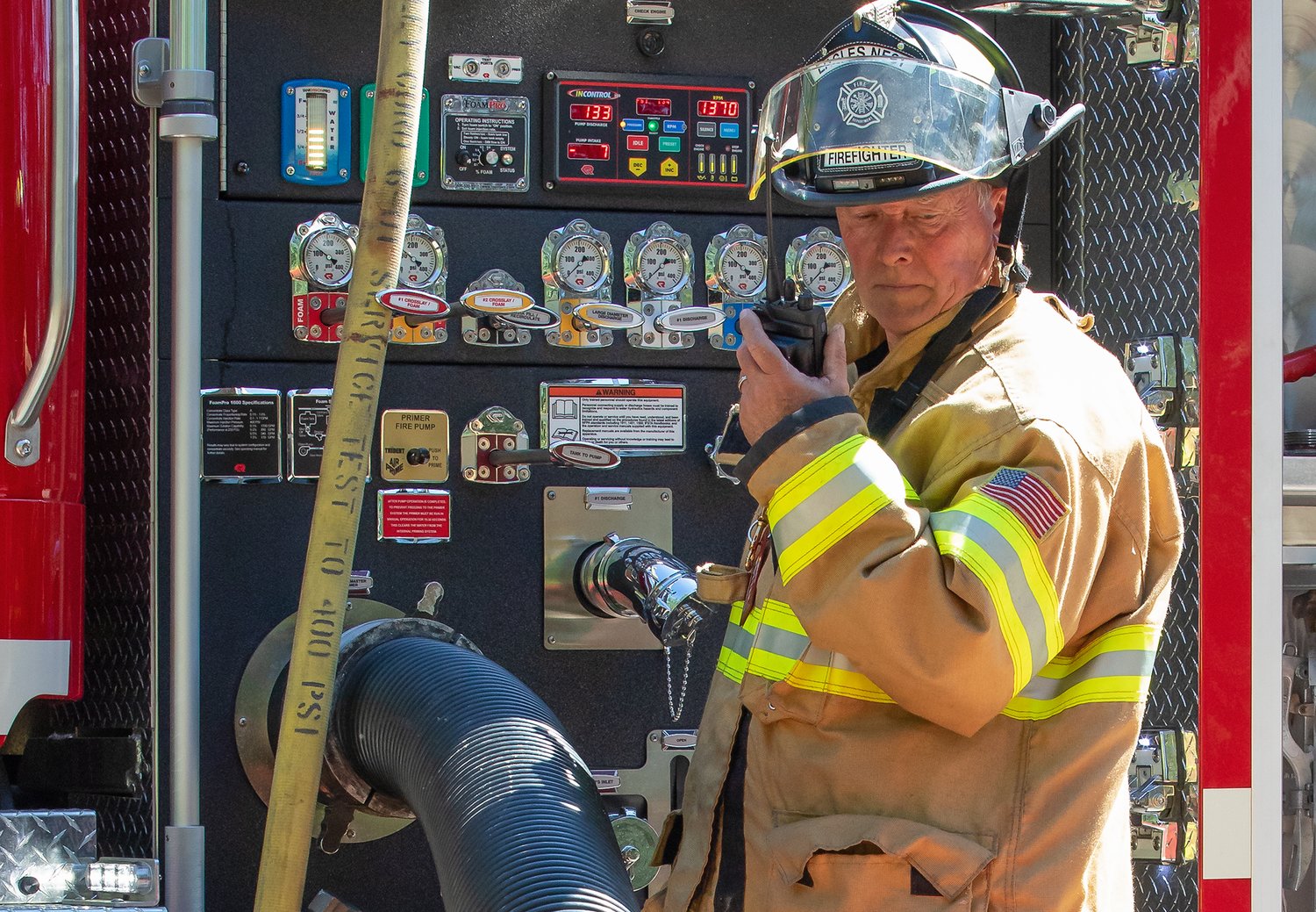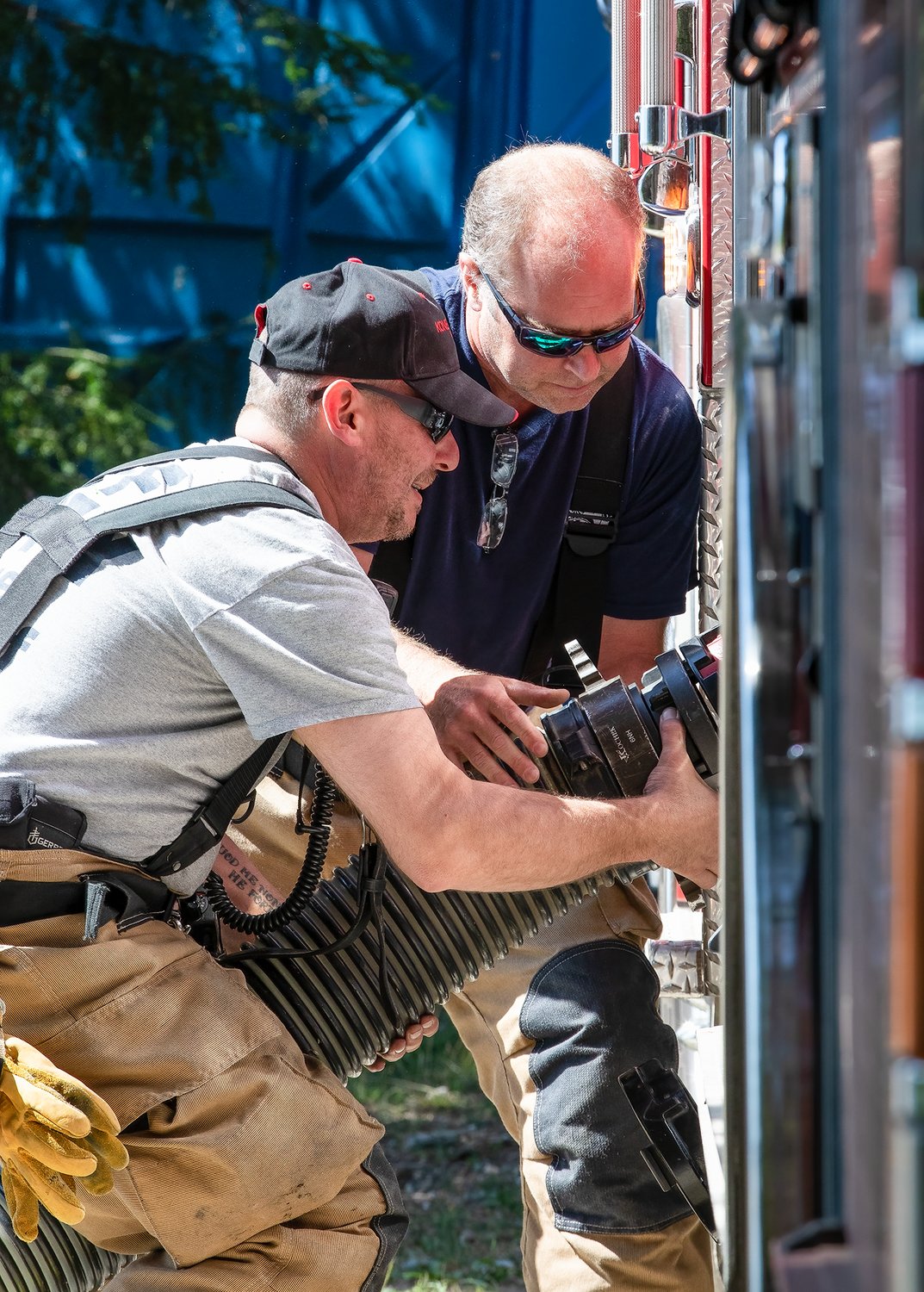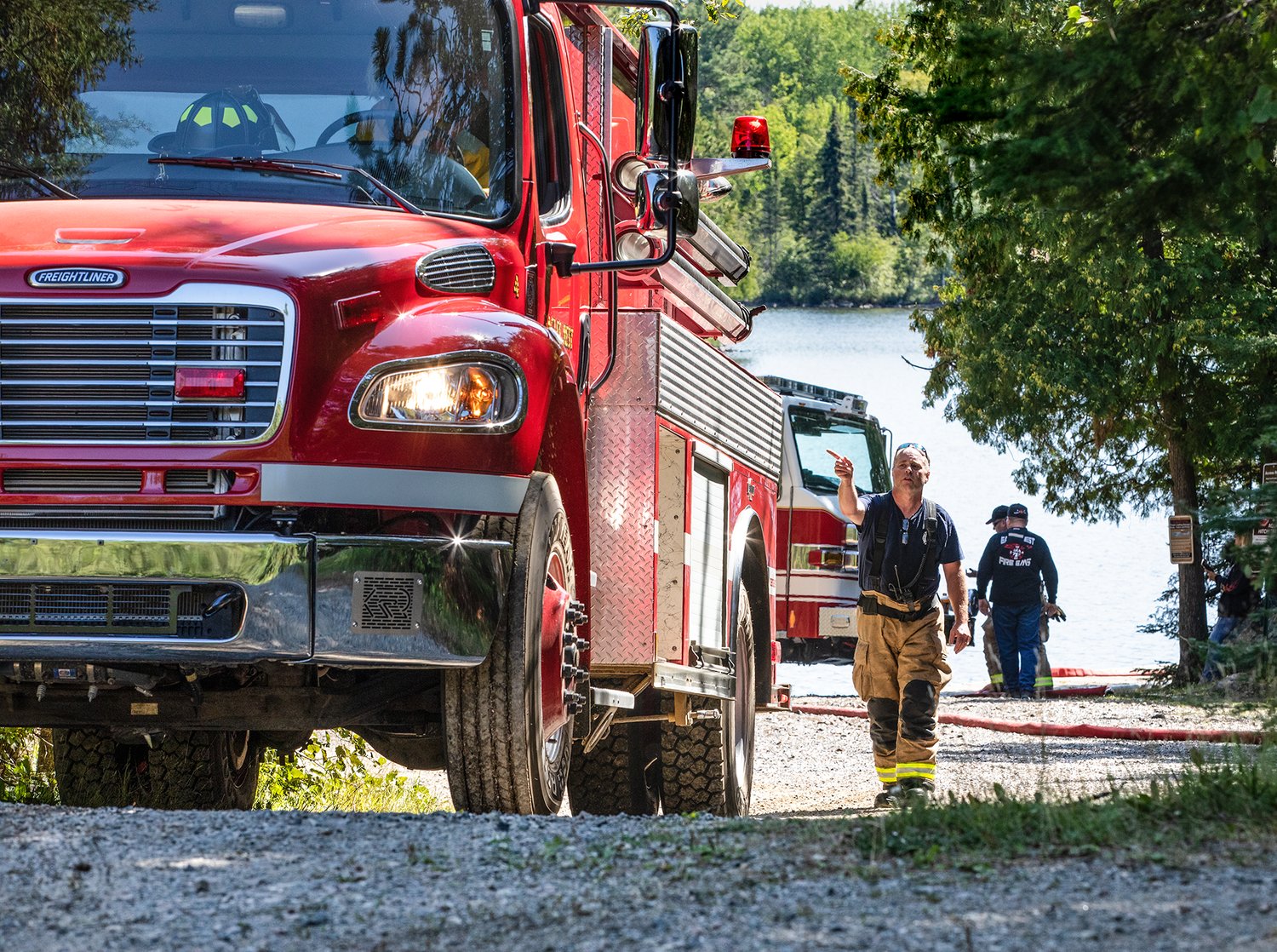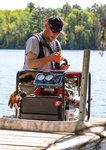Support the Timberjay by making a donation.
Eagles Nest simulates evacuation, fire response
EAGLES NEST- Eagles Nest residents along Trygg Road fled their homes on Saturday as a forest fire swept in on them from the west, while firefighters from four area departments worked furiously to …
This item is available in full to subscribers.
Attention subscribers
To continue reading, you will need to either log in to your subscriber account, or purchase a new subscription.
If you are a current print subscriber, you can set up a free website account and connect your subscription to it by clicking here.
If you are a digital subscriber with an active, online-only subscription then you already have an account here. Just reset your password if you've not yet logged in to your account on this new site.
Otherwise, click here to view your options for subscribing.
Please log in to continue |
Eagles Nest simulates evacuation, fire response
EAGLES NEST- Eagles Nest residents along Trygg Road fled their homes on Saturday as a forest fire swept in on them from the west, while firefighters from four area departments worked furiously to move and spray lake water to save a burning house.
It was all just a matter of going through the motions, but everyone involved in the simulation arranged by the Eagles Nest Fire Department took on their roles seriously, all committed to the effort of testing the ability of emergency personnel and systems to respond effectively to the dire scenario.
Eagles Nest, Ely, Morse-Fall Lake, and Tower firefighters and equipment assembled at the event control center in a gravel pit near the Trygg Road/Highway 169 junction at 9 a.m. to get final instructions from Eagles Nest emergency management coordinator Mike Ostlund and Fire Chief Larry McCray.
“We’ve got a lot of trucks and we’ve got a lot of horsepower out there,” Ostlund said. “So be aware of your surroundings. The goal today is to move residents, but it’s also a training day for you folks.”
“The goal today that we’re looking at in our fire training is water movement,” McCray said “A lot of it. Quickly.”
Given the dangerous fire conditions created by the drought, McCray elicited some laughter from the assembly when he stated the obvious.
“We will not have a live burn,” he said. “Rich Floyd, our township supervisor and chair is here, and as much as we pushed him, he said, ‘Absolutely no fire.’”
Phase one of the simulation began at 10 a.m. with a notice to evacuate that was sent by text message to designated “road ambassadors,” people living along Trygg Road who in turn were to text other residents and receive their acknowledgement.
Notified ahead of time that the simulated evacuation would be taking place, it took only a few minutes for a parade of vehicles, including a bicyclist, to start streaming toward the checkpoint at the highway. Many crossed the highway and waited out the evacuation at the gravel pit command center, while others checked in and then took off for parts unknown, to return later in the day.
Before those at the command center returned to their homes, they participated in a “hot wash,” a debriefing to get feedback on what worked and didn’t work.
Ostlund said that information provided by two of the participants will lead to improvements in the evacuation process.
One resident reported that she saw the text because she knew to be looking for it, but that there was no audible alert when the text was received. If she hadn’t been looking at her phone, she said, she wouldn’t have known it was time to evacuate. Revised guidance will include information about confirming phone messaging settings so that audible alerts are on, Ostlund said.
The second issue involved a couple, each of whom have cell phones. The husband’s cell phone number was the one on the notification list, and he was sent and received the text as planned. The issue?
The husband was in Minneapolis, but his wife was at the home at Eagles Nest, and he didn’t call her about the notice. Knowing the text should have already been sent, she ended up calling him to see if he had received it. Ostlund said residents would be contacted to be sure all cell phones associated with an address are included on the appropriate messaging lists.
Ostlund was already thinking ahead to the next evacuation scenario, noting that there are other possible alert systems to coordinate with, and other scenarios to practice, such as a water evacuation in the event a road is closed by a downed tree.
“It’s a matter of building the program, and that’s what we’re doing,” he said.
And feedback from one resident made the whole exercise worthwhile.
“She said she not afraid of evacuations anymore,” Ostlund said.
Fire scene
Once the evacuation was complete, firefighters were dispatched for a simulated fire at a home on Trygg Rd., a battle that required three separate but equally important activities – pump water from Eagles Nest Lake No. 2 into waiting tenders, transport the water up the road to a portable holding tank, and pump the water from there to firefighters manning four hoses at the end of a long driveway down a steep grade.
A potential issue with designated radio channels that could have confounded communications was resolved just minutes before the trucks were called into action.
Ely Engine No. One was designated as the unit to go to the water access point on the lake and pump water into the tenders, and when they started to set up, they encountered a problem. They weren’t getting enough suction to draw the amount of water needed. An auxiliary pump was immediately deployed to start transferring water while others looked for the source of the problem, which turned out to be mismatched fittings.
“We weren’t getting the flow we needed, so originally we were looking at the fittings of the hoses,” Ely Chief David Marshall said. Hose to hose, the fittings were fine. The issue was connecting the hose to the truck. “We realized that the Storz fitting had to come off of there and the hoses had to be direct-threaded on. That was a change we made, but we knew we had to keep the tenders filled, so that’s when we pulled the portable pump out.”
It took about 25-30 minutes to send the first tender on its way, but that didn’t create any delay at the scene of the house fire. Firefighters there had to get in position, set up the holding tank, lay the hoses, and they were able to start spraying by utilizing already loaded tenders. For most of the exercise, the rotation of tenders to the lake and back was sufficient to keep the water flowing through the hoses at the desired rate, McCray said.
And it seems that the Eagles Nest truck transferring the water from the holding tank to the hoses also had an issue with mismatched fittings.
“We took delivery of a new fire truck with a hard suction hose on it,” McCray said. “We have been practicing with that truck every month since we received it. I guess it’s fantastic that we caught it at a time like this instead of at two in the morning. We’ll replace that hose with one from our old engine.”
Over the course of the simulation, which lasted just short of an hour and a half, the holding tank was refilled seven times, twice by tenders from Ely, Eagles Nest, and Morse-Fall Lake, and once by Tower.
As a recent addition, Tower firefighter Victoria Ranua welcomed the opportunity to practice and learn more about the Tower truck.
“I thank Eagles Nest for coming up with this,” she said. “You can see they put a lot of work, a lot of thought, a lot of planning into it. All we had to do was plug into it. There was one part of my equipment I didn’t know how to use, but the folks on site were able to figure it out, and I took snapshots of the components so I can bring that back (to the department).”
“I was very pleased with the day,” McCray said. “Yes, we ran into some problems, but nothing that was not overcome. I think that’s a testament to the firefighters’ abilities, that we were still successful. If we had a structural fire really going on out there, I think we’d have made real good progress, we probably would’ve saved a good part of it. The people that evacuated were pleased, and we’re very excited about that. My whole goal is to keep this neighborhood safe.”
McCray said the department plans to stage more practice scenarios in the future.













